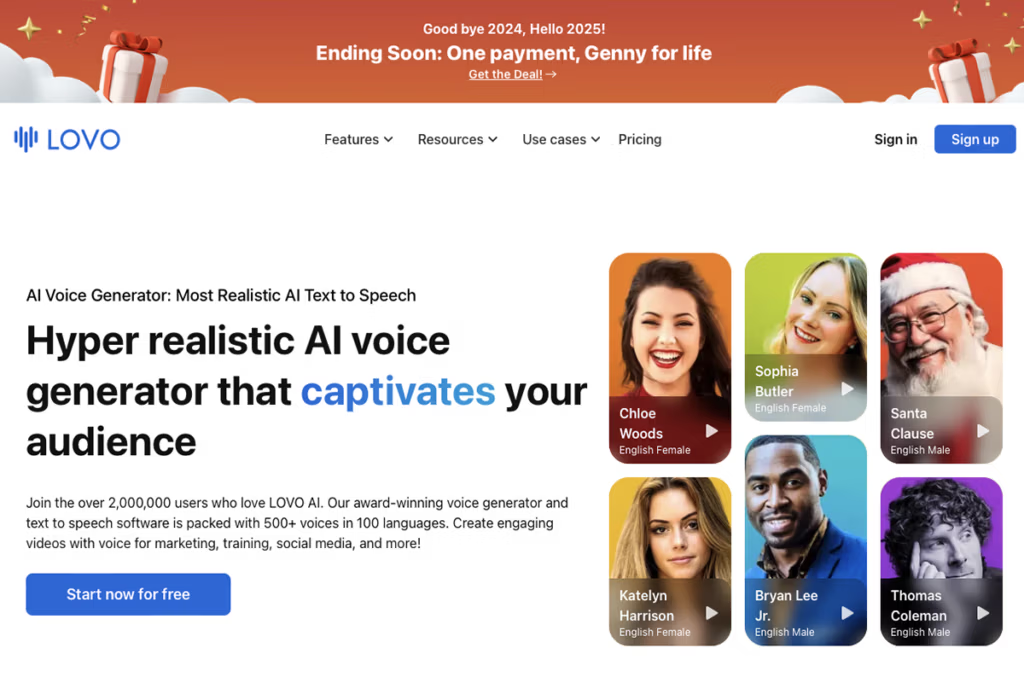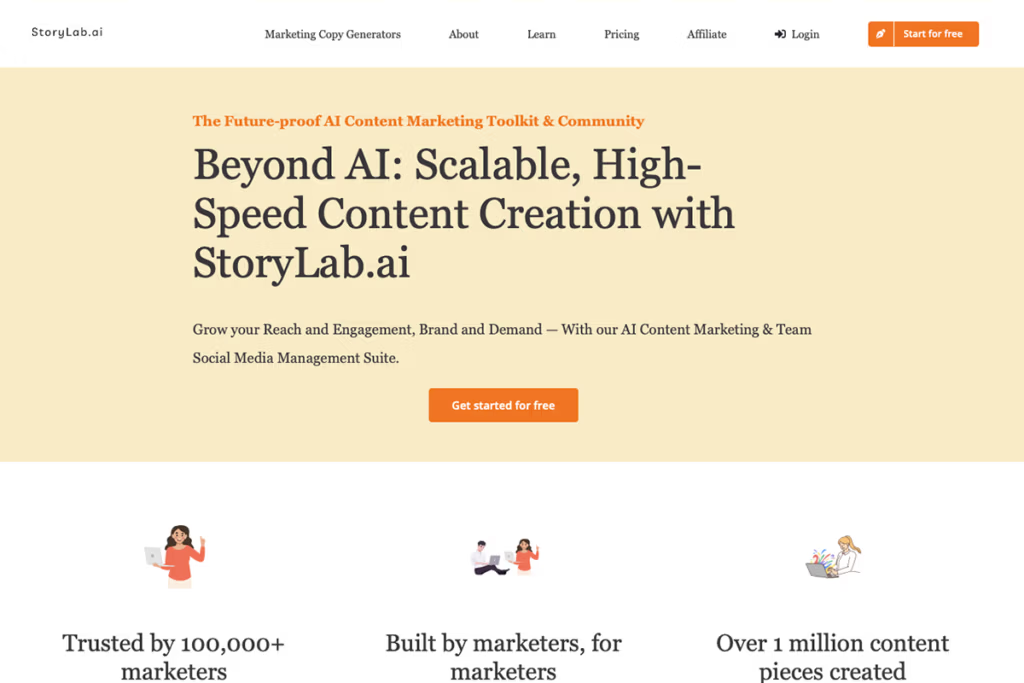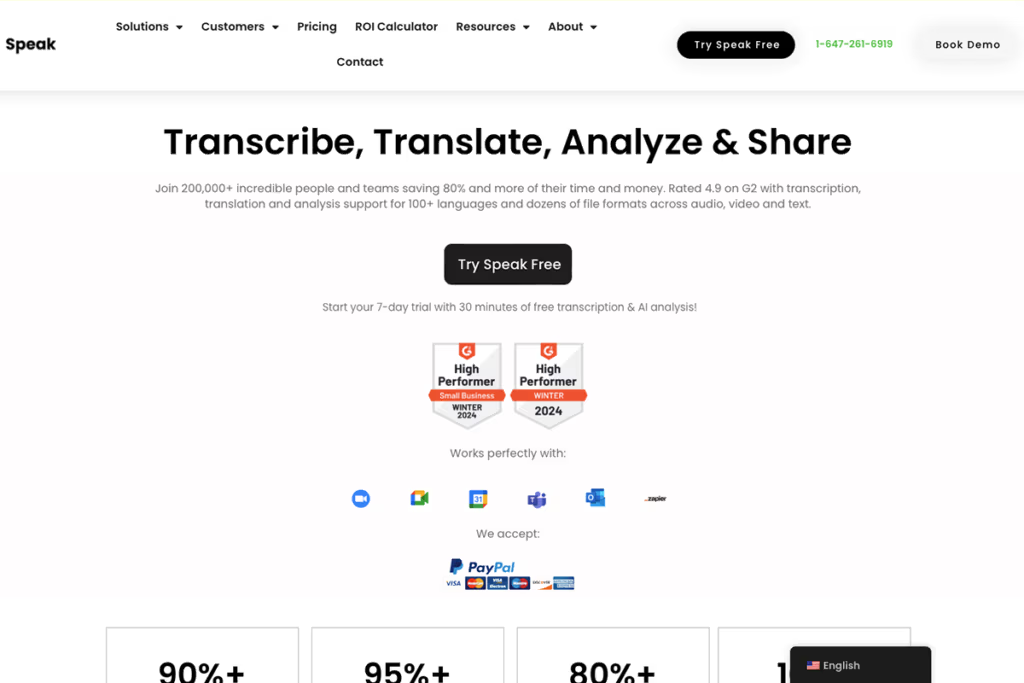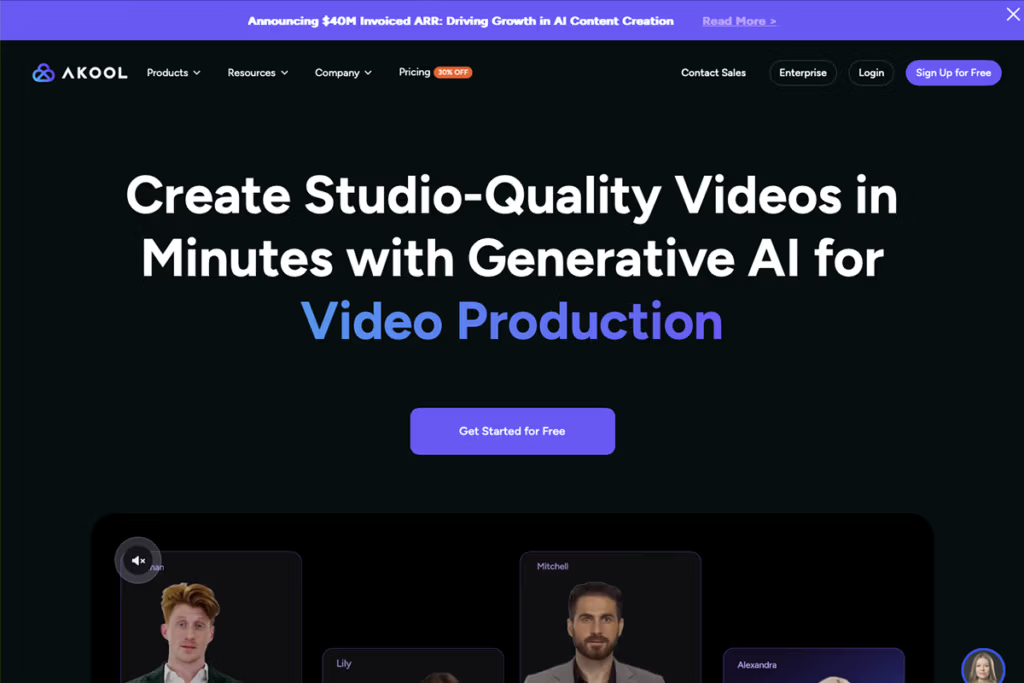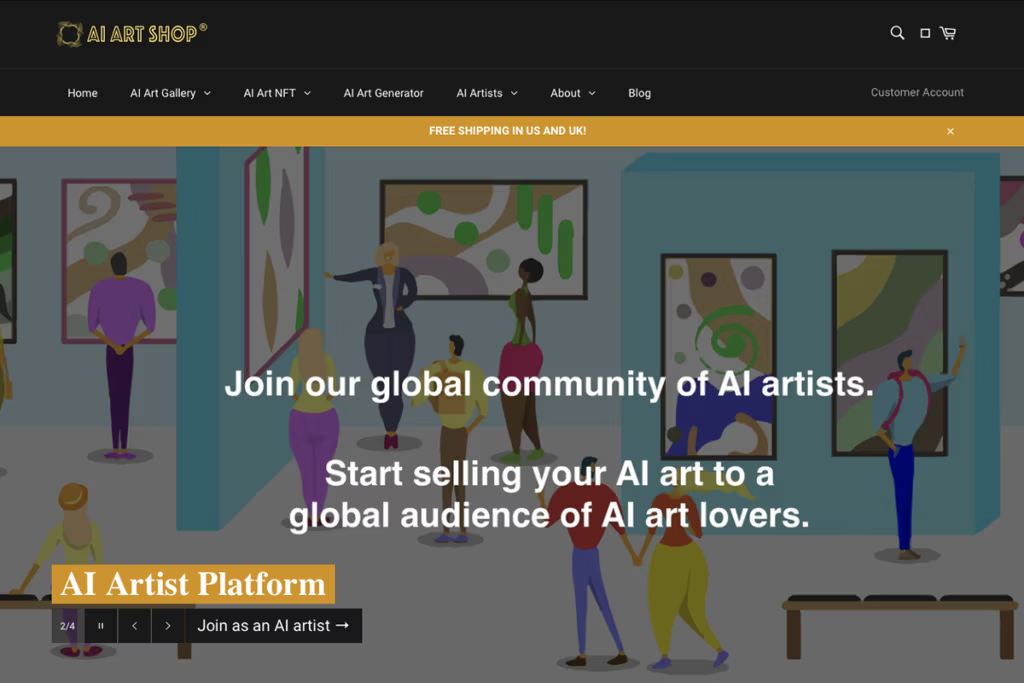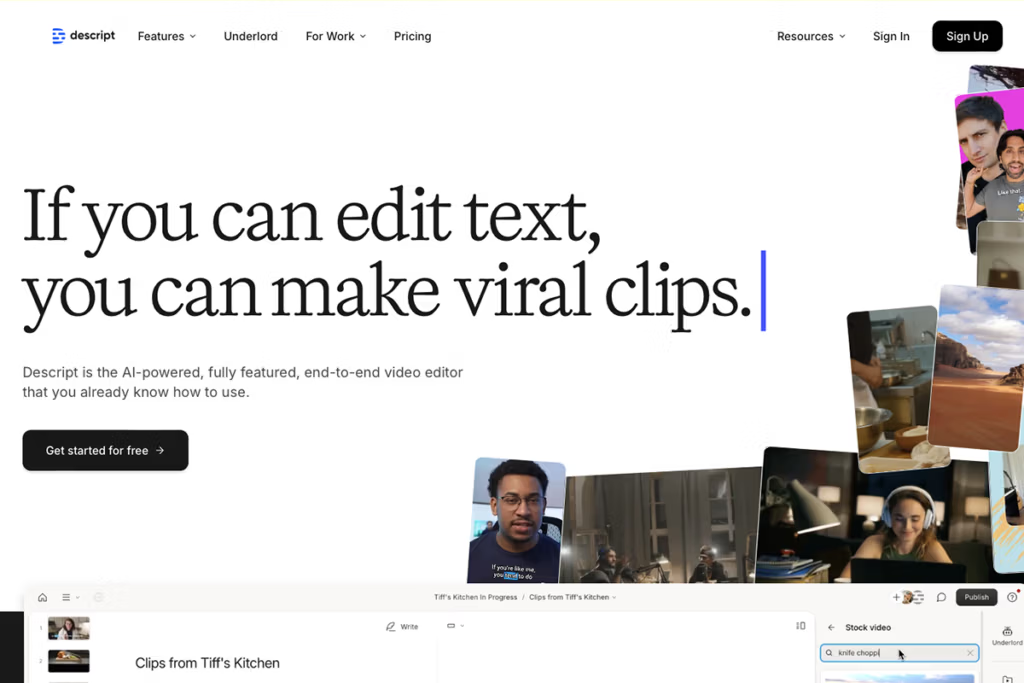Artificial intelligence has already transformed creative work through generative AI – tools that produce text, images, video, or music on demand. Now, a new paradigm is emerging: agentic AI, which goes beyond generating content to intelligently orchestrate tasks and make decisions. This rise of agentic AI promises to revolutionize how creators develop content, offering powerful ways to automate and amplify creative workflows. In this article, we’ll explore what agentic AI is and how it differs from traditional generative AI, examine no-code platforms and custom solutions for building creative AI agents, showcase inspiring real-world use cases, and consider how these advancements will reshape creative roles. We’ll also ponder the future: after agentic AI, what comes next in creative automation?
From Generative to Agentic AI: What’s the Difference?
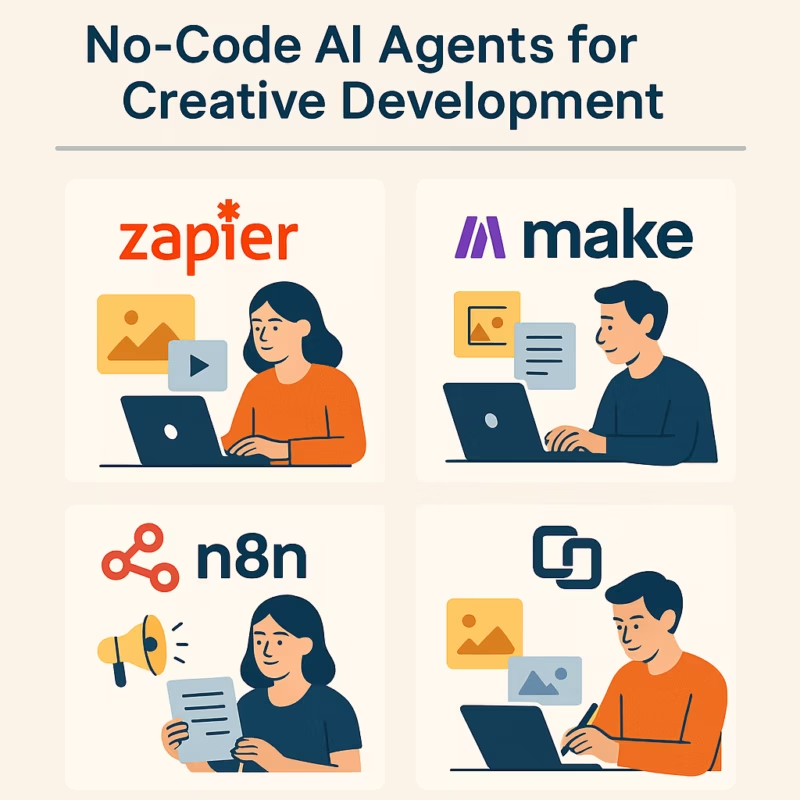 To understand agentic AI’s impact on creative development, it helps to clarify how it differs from the generative AI we’re already familiar with. Generative AI refers to systems like GPT-4 or DALL·E that create original content (text, images, audio, etc.) in response to human prompts. It’s content-focused – you ask for something, and the AI produces a new creative work. By contrast, agentic AI is goal-focused and autonomous. Rather than waiting for step-by-step prompts, an AI agent can take initiative, make decisions, and perform a series of actions to achieve a goal on your behalf. Simply put, generative AI creates content, whereas agentic AI solves problems or completes tasks using that content and more.
To understand agentic AI’s impact on creative development, it helps to clarify how it differs from the generative AI we’re already familiar with. Generative AI refers to systems like GPT-4 or DALL·E that create original content (text, images, audio, etc.) in response to human prompts. It’s content-focused – you ask for something, and the AI produces a new creative work. By contrast, agentic AI is goal-focused and autonomous. Rather than waiting for step-by-step prompts, an AI agent can take initiative, make decisions, and perform a series of actions to achieve a goal on your behalf. Simply put, generative AI creates content, whereas agentic AI solves problems or completes tasks using that content and more.
Think of it this way: using generative AI is like having a talented artist or writer at your disposal – you request a graphic or a paragraph, and it’s generated for you. Using an agentic AI is more like having a digital creative assistant or teammate. You could instruct it with a high-level goal (“Help me produce and publish a social media campaign”), and the agent figures out the steps: generating text, creating images, making decisions on scheduling posts, and so on, with minimal supervision. Agentic AI leverages generative models but adds layers of autonomy and decision-making. It can understand your objective, plan a multi-step workflow, and execute those steps by interacting with various tools or platforms.
This autonomy is a game-changer. Traditional generative models require a person in the loop for each output (“generate caption for this image,” “now summarize this article”). Agentic AI, however, can chain these tasks together intelligently. For example, instead of just writing an article when prompted, an AI agent could be tasked with “Create a blog post and then promote it” – it might generate the text, format it for a blog, decide on relevant images to create or fetch, post the content online, and even schedule follow-up social media posts to drive traffic. All of this happens with the AI taking initiative at each step based on a goal, rather than a human manually triggering each action. As IBM’s researchers explain, agentic AI doesn’t just generate content; it’s focused on making decisions and taking action, without needing constant human prompts or oversight. Early examples of agentic AI include things like autonomous virtual assistants and copilots that can carry out tasks, not just give outputs.
For creatives, this difference means AI is moving from being a mere tool to becoming more of a collaborator or co-worker. Generative AI might give you a piece of content to work with, but agentic AI can handle entire projects or workflows. That opens up exciting possibilities – and some important questions. How do we harness these autonomous agents in our creative process? How do we maintain control and creativity when the AI is doing so much on its own? The key is understanding the new tools at our disposal, which come in both no-code and code-based flavors.
No-Code AI Agents: Automation Without Programming
One of the reasons agentic AI is rising now is the proliferation of no-code platforms that let anyone build automated workflows and AI agents without writing software. Tools like Zapier, Make (formerly Integromat), n8n, and similar automation services have become the connective tissue of the modern internet, allowing creatives and marketers to link apps and services together with simple logic. These platforms are now embracing AI integrations, making it possible to create powerful AI-driven agents through visual interfaces.
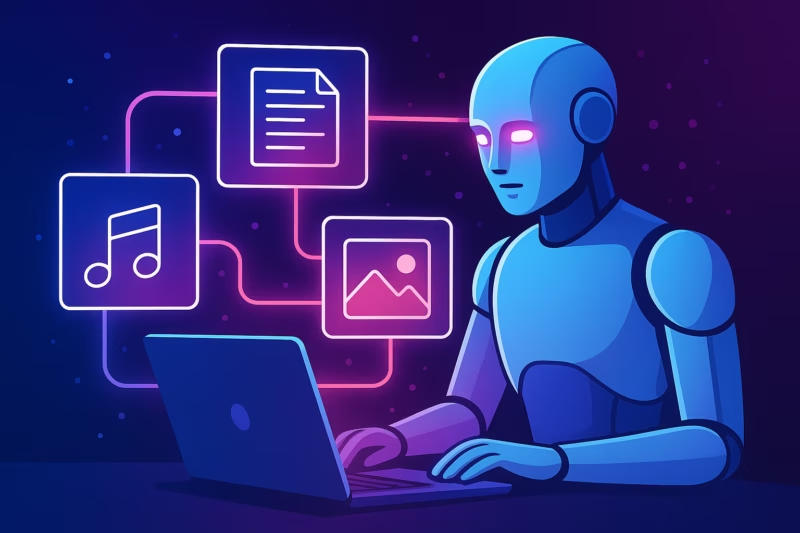 No-code agent-building works by letting you define triggers, actions, and data flows between apps – and now AI is one of those building blocks. For example, Zapier recently introduced Zapier AI Agents, enabling users to incorporate AI-powered decisions and content generation into their automated workflows. With a tool like Zapier, you could set up a workflow where an incoming email or a new file triggers an AI agent to analyze it and respond accordingly. Or imagine connecting a generative text model to your content management system: whenever you add a new topic idea to a spreadsheet, the workflow automatically asks GPT-4 to write a draft article, then saves it to your blog platform for your review. All of this can be configured with drag-and-drop interfaces – no coding required.
No-code agent-building works by letting you define triggers, actions, and data flows between apps – and now AI is one of those building blocks. For example, Zapier recently introduced Zapier AI Agents, enabling users to incorporate AI-powered decisions and content generation into their automated workflows. With a tool like Zapier, you could set up a workflow where an incoming email or a new file triggers an AI agent to analyze it and respond accordingly. Or imagine connecting a generative text model to your content management system: whenever you add a new topic idea to a spreadsheet, the workflow automatically asks GPT-4 to write a draft article, then saves it to your blog platform for your review. All of this can be configured with drag-and-drop interfaces – no coding required.
Make.com offers similar capabilities. As a no-code integration platform, Make allows you to chain together AI services and creative apps. It boasts that you can “leverage AI to instantly generate content copy, images, voiceovers, and more for your social media channels or websites” by connecting thousands of apps with an easy visual interface. For instance, you might create a scenario on Make where a new product listing in your e-commerce database triggers an AI image generation (to create a promotional graphic), a text generation (to write a social media post about it), and then automatically publishes that post to Instagram and Twitter. All those pieces (the database, the AI image generator, the AI writer, the social networks) get linked in one cohesive flow that runs automatically once set up.
Another rising star is n8n, an open-source no-code workflow automation tool. n8n’s community has demonstrated ambitious creative automations, such as building an AI content pipeline that takes an idea from a Google Sheet, uses OpenAI to expand it into a full article, generates an image for it, and then posts the content to various social media platforms – all without human intervention. One n8n workflow template helps social media managers auto-generate platform-specific posts (text and images) for seven different social networks and even handles scheduling and publishing. This template uses GPT-4 to tailor content to each platform, generates appropriate hashtags and even calls an image creation API to get visuals, resulting in an 80% reduction in manual work for content production across channels. It even sets up an approval step – sending drafts via email for a human to review and approve – before the agent posts the content live. This kind of sophisticated workflow, assembled with clicks instead of code, shows how far no-code agentic AI has come.
Crucially, these no-code solutions lower the barrier to entry. You don’t need to be a programmer or machine learning expert to start automating your creative tasks. If you can articulate the steps of your process, platforms like Zapier, Make, or n8n let you translate that into an automated workflow. This means content creators, designers, and marketers – even those with zero coding background – can begin to build their own AI agents. Want to automatically turn your blog post into a video summary? There’s likely a template or easy integration for that. Need to generate ten variations of an ad copy and test which performs best? A few clicks can connect an AI writing tool to your ad platform and even set up A/B tests. The no-code revolution is putting agentic AI in the hands of everyday creators, not just tech giants. In doing so, it’s enabling a wave of experimentation in how we produce creative work.
Going Further: Custom Code and Advanced AI Automation
While no-code platforms are powerful, there are times when creative developers and technically inclined creators will want to push the boundaries of what’s possible. This is where custom code-based solutions for agentic AI come into play. With programming, you can build more specialized or complex AI agents, integrate with niche APIs, and fine-tune every aspect of the automation to your needs. For those with coding skills (or teams that include developers), writing custom scripts or using AI frameworks can unlock advanced automation that no out-of-the-box tool can yet provide.
One approach is to use frameworks and libraries designed for AI agent orchestration. For example, LangChain is a popular library that allows programmers to chain together large language model calls, tools, and logic to build an AI that can reason and act. Developers have used frameworks like this to create experimental agents such as Auto-GPT and BabyAGI, which gained buzz in 2023 for their ability to recursively prompt themselves and perform multi-step tasks autonomously. A custom-coded agent might use an LLM (Large Language Model) to analyze a goal, break it into tasks, call various APIs to gather information or create content, and loop on this process until the goal is achieved. In a creative context, a coded agent could, say, take a high-level directive (“Promote my new song release”), then write a marketing plan, generate social media posts, create artwork using a generative image API, and even schedule those posts via a social media API – all orchestrated through code that the developer controls in detail.
Custom solutions also allow integration of proprietary tools and data. A large organization or a power-user might want an AI agent that plugs into their specific database, uses their in-house content library, or follows a very custom workflow. With code, you can connect AI capabilities to virtually anything: your Photoshop scripts, your video editing software’s API, or your website’s backend. For instance, a developer at a media company could program an AI agent to pull the latest news articles from an internal system, summarize each in a catchy way, generate accompanying infographic images, and then send everything to an editor for approval via a Slack message. This kind of bespoke pipeline might be beyond what current no-code tools offer, but it’s achievable with a few hundred lines of Python or JavaScript using AI APIs and automation libraries.
Of course, custom development requires more effort and technical know-how. Not everyone will build their own AI agent from scratch, just as not everyone codes their own website by hand. But for those who do, the possibilities are essentially endless. We’re already seeing forward-thinking creatives and startups build specialized AI “co-pilots” for tasks like video editing (e.g., automatically finding the best clips from hours of footage), graphic design (generating dozens of logo ideas and sorting them), or even music production (where an AI agent can suggest chord progressions, generate sample beats, and organize them in a mix). These solutions can be closely tailored to a creator’s style or a brand’s voice, since the developer can tweak parameters and training data or even fine-tune models as needed. In sum, if you can dream a creative automation and you have coding capabilities, agentic AI provides a toolkit to build it.
Whether through no-code or custom code, the rise of agentic AI means creatives have a new superpower: the ability to delegate not just manual labor, but creative decision-making and multi-step processes to an AI. To make this concrete, let’s look at a real-world scenario that shows how a creative professional might use an AI agent today.
Agentic AI in Action: A 360° Content Campaign Example
Consider a digital marketer named Maya who works for a small online business. Maya’s goal is to increase her brand’s visibility through content marketing, but she’s a one-person team – she needs to produce blog posts, social media updates, visuals, and even ads, all on a tight schedule. Enter agentic AI. Maya decides to set up an AI agent (using mostly no-code tools) to handle a large part of this creative workload.
First, Maya feeds her AI agent a task: “Generate an SEO-optimized blog post about our new product and then repurpose it across our marketing channels.” This high-level instruction is all the agent needs to take action. Here’s how it unfolds:
- Research and Writing: The agent uses a connection to a large language model to draft a 1,500-word blog post. Drawing on both the product details Maya provided and general web knowledge, it writes an article that is keyword-rich and tailored to her target audience. Maya has set up the workflow so that once the draft is ready, it’s sent to her for review via email. She gives it a quick read, tweaks a couple of sentences for accuracy and tone, and approves it.
- Imagery Creation: Upon approval of the text, the AI agent automatically moves to the next step: creating visuals for the blog and social media. Using an image generation AI (like DALL·E or Midjourney via an API), it produces a couple of on-brand illustrations to accompany the post. It also generates a series of variations suitable for different platforms – for example, a 16:9 image for the blog header, a square version for Instagram, and a lightweight graphic with the article title for Twitter. If generative image AI isn’t available or appropriate for some images, the agent can alternatively pull from a stock photo library based on the content of the article. Maya could even configure the agent to use her company’s brand assets (like logos or specific templates) when composing these images.
- Multi-Platform Social Content: With the main blog content ready, the agent now transforms it into social media posts. It condenses the key points into a Twitter thread, crafts a punchy LinkedIn post, and creates an Instagram caption. Each of these is tailored to the platform’s style and character limits. For instance, the agent knows to keep tweets short and use relevant hashtags, while the LinkedIn post might be more professional in tone. It even suggests a few hashtags and emojis where appropriate, courtesy of its social media-savvy prompt programming. Maya has pre-defined the platforms she cares about and given the agent some guidelines (like “our brand voice is playful” and “always include a call-to-action link”).
- Video and Audio: Since Maya also wants to engage her audience on YouTube and via a podcast, the agent doesn’t stop at text and static images. It takes the blog content and feeds it into a text-to-speech engine to produce a narrated audio version of the article – essentially creating a mini podcast episode of that blog post. Simultaneously, it uses a video generation tool to create a short video summary of the article: this could be done with a service that generates slides or animations from the text, or even just a simple montage of related visuals with the AI-narrated audio overlaid. With recent AI advances, it’s possible to generate decent video content from a script automatically. The agent produces a 60-second video highlighting the key takeaways of the blog post, which Maya can upload to TikTok, Instagram Reels, or YouTube Shorts for additional reach.
- Automated Publishing and Scheduling: Now that all the content pieces are prepared – the blog article, images, social posts, video, and audio – the agent moves on to distribution. Thanks to integrations with various platforms, it uploads the blog post to the company’s website CMS (content management system) and schedules it for publishing. It then schedules the social media posts at optimized times (Maya told the agent to post to Twitter in the morning and Instagram in the evening, based on when her audience is most active). The YouTube video is uploaded with a title and description that the agent also generated, and the podcast audio is queued on their podcast feed. All of this happens seamlessly in the background.
- Monitoring and Follow-up: An advanced agent might even monitor the engagement of these posts over the next few days and automatically create a brief report. For instance, it could compile the number of views, likes, and comments, and even draft a summary email to Maya: “Your campaign is live and here’s how it’s performing so far.” If Maya wanted to get fancy, the agent could be set to iteratively improve content: e.g., if the Twitter thread is getting a lot of questions in replies, the agent might post a follow-up tweet addressing a common question, or it might adjust the blog post if it notices a high bounce rate.
What took place here? Maya essentially oversaw the process, stepping in at key points to guide and approve, but the heavy lifting – writing, designing, repackaging content, and publishing – was done by an AI-driven workflow. This isn’t science fiction; it’s increasingly feasible with today’s agentic AI tools. In fact, components of this scenario are already implemented by savvy marketers. A Make.com case study describes automating an entire content pipeline from ideation to publishing, connecting AI tools for copy, images, and even voiceovers. The result is not just saving time (though the time savings are enormous), but also enabling a level of multi-channel presence that would be exhausting for one person to manage alone. Our marketer in the example can be in many places at once – on the blog, on every social platform, in email inboxes – without burning out, thanks to her AI agent.
This example highlights a powerful point: agentic AI can function as a force multiplier for creative work. It takes the fruits of generative AI (the content) and drives them through the entire creative development cycle. The human creator retains control over the strategy, the brand voice, and final approvals, but they are freed from much of the grunt work and repetitive tasks. That means more time and energy for the human to focus on what they do best – the truly creative, visionary part of the job, which no AI can (yet) replace.
Empowering Creative Roles with Automation
Agentic AI is poised to transform the day-to-day work of various creative professionals. From writers to designers to video editors to marketers, everyone stands to gain new capabilities by offloading certain tasks to AI agents. Let’s look at how different roles can leverage automation to augment their creativity rather than diminish it:
- Writers and Content Creators: If you’re a blogger, copywriter, or content strategist, AI agents can turbocharge your workflow. Rather than spending hours on first drafts, you can have an AI agent generate drafts for you (in your voice, based on past writing it has analyzed), leaving you to do the higher-level refining and polishing. An AI agent can also serve as your research assistant – gathering facts, pulling quotes, and even suggesting outlines while you focus on crafting the narrative. When the piece is done, agents can help distribute it (as we saw with Maya’s example) and even repurpose it into summaries or social media blurbs. Far from replacing the writer, this empowers writers to produce more and focus on creativity and quality. You might go from writing one article a week to overseeing the creation of three or four, with the same effort, because the AI handles the drudgery of research, SEO optimization, formatting, and so on.
- Designers and Visual Artists: Graphic designers and illustrators might use generative AI as a sketching partner – for example, quickly generating concept art or variations of a design to spark new ideas. With agentic AI, a designer can set up an agent to do batch tasks like creating an entire set of banner images in various sizes and languages, all following a base design. Imagine telling an AI agent, “Create a unified campaign design: a poster, a Facebook ad image, an Instagram story graphic, and an email header, all coordinating with this product theme.” The agent can then produce and resize all these automatically, perhaps even suggesting improvements (“Would you like me to adjust the font for better readability on the smaller images?”). Designers remain in control – they approve and tweak the outputs – but they don’t have to manually redo the same layout 10 times for 10 formats. This is already being hinted at by companies like Adobe, who are integrating agentic AI into tools like Adobe Express to act as a “creative partner across every stage of the creation process,” letting users simply ask for design adjustments or new assets and having the AI carry out those actions. The result is that designers can iterate faster and focus more on the creative direction, with the AI handling repetitive production work.
- Video and Audio Editors: Editing video or audio is traditionally a labor-intensive process, but AI is stepping in to streamline it. Agentic AI can be used by video editors to auto-select highlights from raw footage (using scene detection and even understanding transcripts of dialogue), essentially providing a rough cut that the editor can then refine. For example, an editor could deploy an AI agent on a 2-hour webinar recording with the goal “make a 5-minute highlight reel,” and the agent could transcribe the audio, find the most interesting segments (perhaps based on audience reactions or keywords), and stitch together a draft video timeline complete with captions. The human editor then perfects the transitions and adds a creative touch, but they’ve skipped the boring parts of scrubbing through footage endlessly. Similarly for audio, podcasters can use AI agents to remove filler words, level audio volumes, and even generate show notes and transcripts automatically. These agents act like diligent studio assistants. They won’t replace the storytelling sense of a skilled editor, but they dramatically reduce the time spent on technical tedium – letting editors concentrate on storytelling and style.
- Marketing and Social Media Managers: Perhaps the biggest winners from creative automation are marketers, who often need to produce a huge volume of content across different channels. Agentic AI can effectively become a marketing team member that works 24/7. Marketers can use it to personalize content at scale – for instance, generating slightly different ad copy for different audience segments or A/B testing imagery with minimal effort. Social media managers can automate posting calendars, but with AI they can also automate the creation of the posts themselves (as we saw with the multi-platform posting example). This doesn’t just save time; it enables a level of responsiveness and experimentation that would be impossible manually. If a trending meme or topic emerges, an AI agent could quickly draft a relevant on-brand post to let the brand participate in the trend, without the manager having to scramble. Additionally, AI agents can watch metrics and perhaps even adjust campaigns in real-time (e.g., pausing ads that aren’t performing and reallocating budget to ones that are, according to rules set by the marketer). The marketer’s role then evolves to setting strategy, brand guidelines, and supervising the AI’s outputs, rather than hand-crafting every piece of content. As Adobe’s vision for agentic AI in creative tools suggests, even non-technical users (like a marketer who isn’t a designer) will be able to “simply ask the agent to create and improve upon a design” and quickly get results across multiple formats. In short, marketers who embrace these tools can run bigger, more impactful campaigns with the same or fewer resources, focusing on creative strategy and letting the AI handle execution details.
Across all these roles, a common theme emerges: automation is handling the busywork, allowing human creatives to focus on the uniquely human aspects of creativity. Rather than replacing creative professionals, agentic AI is becoming an amplifier of their abilities. As one Adobe executive noted, AI agents aren’t inherently creative by themselves, but they “empower people — enabling individuals to unlock insights and create content that they wouldn’t otherwise be able to”, while letting professionals “scale and amplify their impact more than ever”. A video editor with an AI assistant can take on more projects without burnout. A graphic designer can deliver an entire campaign kit in the time it used to take to make one or two graphics. A writer can maintain a consistent presence on a blog and multiple social channels, without quality suffering, because the AI is helping repurpose and distribute their words strategically.
Redefining Creativity: The Designer’s Eye or the Automation Expert?
 With all these changes, a compelling question arises: in the future, will the creative field prize traditional creative talent (the proverbial “good eye” for design, the ear for a great sound, the storytelling knack) or the ability to master and direct these new AI tools? In other words, does creativity belong more to those with artistic vision, or to those who can effectively leverage automation and AI?
With all these changes, a compelling question arises: in the future, will the creative field prize traditional creative talent (the proverbial “good eye” for design, the ear for a great sound, the storytelling knack) or the ability to master and direct these new AI tools? In other words, does creativity belong more to those with artistic vision, or to those who can effectively leverage automation and AI?
The likely answer is both, but the balance is indeed shifting. Creative vision and taste – the deeply human ability to know what will resonate emotionally, what is aesthetically pleasing, what is novel and meaningful – remains as critical as ever. In fact, as more routine production gets automated, the distinguishing value of a human creative may well be their taste and judgment. An AI can generate ten versions of a logo, but a human designer still needs to recognize which one (or which elements from each) truly capture the brand’s spirit. A content agent can spit out dozens of social posts, but a savvy marketer decides which message best aligns with the campaign’s story and audience. In this sense, the classic creative skills – an eye for design, strong writing voice, visual storytelling ability – will never go out of style. If anything, those who have honed these talents might find they can execute their ideas at much greater scale with AI assistance.
On the other hand, there is a growing argument that the “meta-skill” of the future is knowing how to use technology to amplify whatever you do. In creative work, that means those who can master automation will have an edge. A designer who can prompt an AI image generator effectively or set up an automation to batch-produce assets might outperform an equally talented designer who only works by hand. A writer who learns to fine-tune AI language models on their own writing style will outproduce and perhaps even outshine a similarly skilled writer who doesn’t use these tools. We’re already seeing new roles emerge that blend creativity and technical savvy: “creative technologists,” “AI-assisted filmmakers,” “prompt engineers” for copy and art. These are people who might not be the absolute top in pure artistic skill or pure coding skill, but have a hybrid mastery that allows them to get incredible results by combining their abilities with AI. In effect, being a great creative in the near future could mean being part artist, part conductor of an AI orchestra.
It’s also possible that creative teams will evolve to include a mix of both types of talent. We might have duos or teams where one member is the aesthetic guardian (ensuring the output is high quality and on-brand) and another is the automation wrangler (setting up the AI systems that generate the output). In smaller operations or solo creators, one person might wear both hats – a situation that encourages creatives to be cross-disciplinary and continuously learn new tools. The optimistic view is that automation and human creativity aren’t adversaries but partners. History shows that when new tools arrive, the most successful creatives are those who adapt and integrate them. Photography didn’t kill painting; painters who embraced photography found new perspectives (and indeed photography became its own art form). Similarly, AI might not kill design or writing jobs, but it will change them. Those changes could be liberating – less grunt work, more focus on high-level creative problem solving – but only if creatives lean in and learn how to ride the wave. In the end, the future of creativity will likely belong to those who fuse a strong creative sensibility with the skill to harness advanced tools. As agentic AI handles more of the “doing,” human creatives will excel by focusing on the choosing, guiding, and imagining – things that, at least for now, only people can do well.
Beyond Agentic AI: The Next Frontier in Creative Automation
As we witness agentic AI taking shape, it’s natural to wonder: what comes next? If today’s cutting-edge is an AI that can execute tasks across apps and act with some autonomy, what will the creative process look like in another five or ten years?
One possibility is the emergence of even more intelligent and context-aware agents. Current AI agents, impressive as they are, still have limitations. They operate within the goals we set and the data we give them. The future could bring agents that have a richer understanding of context – for example, an AI that deeply understands your brand’s values, your audience’s emotions, and the cultural context in which your content will land. Such an agent might function almost like a creative director. You could tell it, “I need a campaign to promote product X to demographic Y, and I want it to feel like this famous campaign but with our twist.” The AI would then not only generate content, but also strategize the campaign, perhaps even conduct market research in real time by analyzing trends and feedback, adjusting its creative approach on the fly. In a way, the agent would combine creative execution with strategic planning – a higher level of autonomy.
We might also see the integration of multiple specialized agents collaborating. Instead of one monolithic AI trying to do everything, you might deploy a team of AIs that work together on a project. For instance, one agent could specialize in copywriting, another in visual design, another in data analysis (checking which designs perform best), and another in project management (scheduling and coordinating everything). These AI agents could communicate among themselves (with rules you set to prevent chaos, of course). If the copywriting agent changes the slogan, the design agent might automatically adjust the imagery to match the new tagline. This kind of multi-agent ecosystem could mirror a real creative team, with each AI agent being an expert in its domain. In fact, this concept is already being explored in research and some tech demos, where one AI can delegate subtasks to other AIs as needed – a sort of “manager” AI orchestrating worker AIs.
Another frontier is the blending of physical and digital creativity. Agentic AI doesn’t have to stay on computers – imagine creative agents integrated with robotics or IoT devices. A simple example: a painting robot guided by an AI agent that takes a digital concept and produces a physical canvas. Or consider event design – an AI agent could control lighting, music, and visuals in a physical space, improvising a live show in response to the crowd’s mood. These scenarios stretch the definition of “creative development” but show how the principles of agentic AI (autonomy, goal-driven action) could extend creativity into new realms.
Moreover, as agentic AI handles routine creative production, human creators may push towards more experiential and interactive media. The next wave might be AI agents that don’t just create content for consumption but create content that is itself dynamic and responsive. Picture an AI-driven game designer agent that can adjust the game’s story in real-time based on player choices, or a narrative AI that personalizes a film’s plot for each viewer. These are speculative ideas, but the seeds are visible today in things like AI-driven personalized music playlists or dynamic content in video games. In the future, we could have AI agents co-creating experiences with us in real time.
Finally, beyond agentic AI lies the question of how much creative control we hand over to machines. Agentic AI still works under human-defined goals. But as AI systems possibly grow more advanced (edging towards what some call AGI – artificial general intelligence), they might contribute more fundamentally to idea generation, not just execution. We may reach a point where for certain projects the AI is essentially a co-creator in the truest sense – not just doing tasks assigned, but suggesting what the project should be in the first place. This raises exciting possibilities as well as important ethical and philosophical questions. Who is the artist when an AI proposes the idea and also realizes it, and a human just facilitates? We will likely spend the next decade working out new norms for authorship, credit, and originality as these lines blur.
In summary, the horizon beyond agentic AI in creative work could bring greater autonomy, collaboration among AI, and an expansion of what “creative content” means. It’s a future where the creative process might be highly fluid and customized: part human inspiration, part AI perspiration, all working in concert. For content creators, staying ahead will mean staying adaptable and open-minded. The tools and agents will keep evolving, but those who approach them with curiosity rather than fear will help shape a future where creativity is more abundant and accessible than ever.
Embracing the Future of Creative Automation
Agentic AI represents a thrilling new chapter in the story of creativity. It stands on the shoulders of generative AI – using those content-creating powers – and adds the ability to carry out goals autonomously, acting as a tireless assistant or even a co-creator. For anyone involved in making videos, images, text, or audio today, these developments mean one thing: your creative workflow is ripe for transformation.
No-code tools have made AI agents accessible to all, letting you automate complex workflows with a few clicks. Custom code solutions offer a playground for innovators to push creative automation to astonishing lengths. Real-world examples, like our marketer Maya’s content campaign, show that this isn’t just theory – it’s happening now, and it works. Content creators, designers, editors, and marketers are already starting to see how they can leverage these AI helpers to do more, faster, and focus on what they love most. Instead of replacing the creative spark, agentic AI is handling the sparks that fly off – catching them and forging them into something useful, while you concentrate on the main flame of the idea.
Yes, the advent of autonomous creative agents challenges us to rethink our roles. It asks us to learn new skills and adapt. But it also augments the value of our uniquely human creativity. In the end, the heart of creative development remains the same – human imagination and storytelling – but the hands have multiplied. You now have many hands (and eyes and ears) in the form of AI agents to carry out your vision. The future of creativity won’t belong to automation alone, nor to human talent alone, but to those who can blend the two into a powerful synergy.
It’s an inspiring time to be a creator. The mundane is evaporating from our job descriptions, and the magical is taking its place. Whether you’re an artist, a writer, a filmmaker, or a marketer, agentic AI can be your ally in breaking through creative barriers and scaling new heights. So dream big about your next project – you just might have an AI agent by your side to help make it a reality. The tools are here, and what comes next is up to us, the creative humans, to explore. The rise of agentic AI in creative development isn’t the end of human creativity; it’s the beginning of a new era where our ideas can soar further, carried by the winds of intelligent automation into uncharted skies of possibility.



